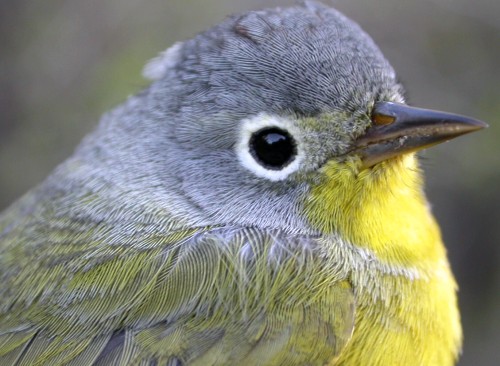|
McGILL BIRD OBSERVATORY |
||||||||||||||||||||||||||||||||||||||||||||||||||||||||||||||||||||||
Welcome
to the McGill Bird Observatory weekly report.
Click here for a complete listing of our archives.
Banders-in-charge:
Marcel Gahbauer, Marie-Anne Hudson, Barbara Frei Notes: Although the main push of warblers, vireos, and flycatchers is yet to come, the past week has been marked by a considerable spike of new migrants. In total, 20 species were observed for the first time this year, including 7 new species on May 4 alone. The 80 species observed over the course of the week is also a considerable jump over last week's 63 (and equals the season-to-date total as of the end of last week!). Many of these, however, were represented by lone individuals, as our daily totals hovered between 47 and 50 species for most of the week. The new arrivals included two sandpipers (Greater Yellowlegs and Solitary Sandpiper), five warblers (Nashville, Yellow, Palm, Black-and-white, and Common Yellowthroat), and an assortment of other passerines including Eastern Kingbird, Wood Thrush, Warbling Vireo, Rose-breasted Grosbeak, and Baltimore Oriole. The highlight of the week was a spectacular raptor migration around closing time on Thursday. Within a span of less than half an hour, over 40 individuals of at least 7 species (some were too high to identify) streamed past, including 13 Red-tailed Hawks, 9 Ospreys, 9 Red-shouldered Hawks, 2 Broad-winged Hawks, 2 Golden Eagles (our first ever in spring), 1 Bald Eagle, and 1 Peregrine Falcon! This is an unusually late date for some of these species, most notably the Red-shouldered Hawks and Golden Eagles, suggesting that even raptors have been somewhat held back by the weather system we've been experiencing over the past month. The number of birds banded this week nearly doubled compared to last week, but the nets were dominated by four species, accounting for nearly 80% of all birds banded. Topping the list for a third straight week are Red-winged Blackbirds, with this week's additions bringing the season total to 99. A second wave of Ruby-crowned Kinglets moved through early in the week, vaulting them back into second place for the week with 32. Common Grackles came in third again, a surprise since this week alone we banded more of them than in all of spring 2005! White-throated Sparrows increased considerably in abundance this week, though they are still not as abundant as they were at the peak of their migration last spring. This week the White-throated Sparrow became the first species of which we've banded more than 500 individuals at MBO. All other species banded this week were much less numerous, with three or fewer individuals. Also of note this week was our first foreign recovery of spring, a male Ruby-crowned Kinglet banded at Tommy Thompson Park in Toronto in October 2005.
The top of the 'observed' list is a surprise this week, given that we haven't seen Snow Geese at all since the second week of the season. It's a somewhat deceptive result too, since 3800 of them passed overhead during a 5-minute period on Saturday morning, followed by another 275 on Sunday. Meanwhile the Canada Goose numbers continue to drop, but remain good enough to easily hold on to second place for the week, with more than 250 seen per day, on average. Ring-billed Gulls have become more numerous again in the past week, largely thanks to them following the tractors ploughing the field to the east. Red-winged Blackbirds appear to have largely settled in, but Common Grackles are clearly still migrating. They are much more abundant this spring than last year. This week, we observed an average of 35 individuals per day, whereas in 2005 we never recorded more than 17 in a single day! New entries in the top ten this week are White-throated Sparrow and Ruby-crowned Kinglet, reflecting their steady increase in numbers. Meanwhile, Fox Sparrows did not make any appearances this week, and sightings of Slate-coloured Juncos have tapered off rapidly. Remarkably, we did not see a single Cedar Waxwing all week, a sharp contrast to last spring when they were the second most abundant bird banded.
|



